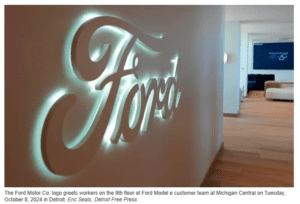Pre-Tax Flexible Benefits – The Pros and Cons of Cafeteria Plans

Cafeteria Plans
While more choice is always welcome, there are some drawbacks to cafeteria plans. Here’s what you should know if you’re considering offering this benefit.
Background
A cafeteria plan sometimes is referred to as a flexible benefits plan because it allows employees to choose from a variety of qualified benefits, which are generally not included in gross income. Employees decide how much of their gross income they want to use for benefits before any taxes are calculated and deducted.
Qualified benefits include:
Accident and health benefits
Adoption assistance
Dependent care assistance
Group-term life insurance coverage not exceeding $50,000
Health savings accounts including distributions to pay for long-term care services
Employer‐provided benefits that are not included in gross income and are not allowed in a cafeteria plan are called non-qualified benefits. Nonqualified benefits include:
Scholarships
Employer-provided meals and lodging
Educational assistance
Fringe benefits.
There are several types of cafeteria plans:
Full flex plans: Employers make contributions for all plan-eligible employees, who they can use to buy various benefits. For benefits that employer contributions don’t cover, employees can make pre-tax contributions.
Premium-only plans (POPs):
Employees can choose between receiving their full salary in cash or use a share of it to pay group insurance policy premiums on a pre-tax basis.
Simple cafeteria plans: In exchange for contributing to each eligible employee’s benefits, employers with 100 or fewer employees can get safe harbor from certain plan non-discrimination requirements.
Flexible spending arrangements (FSAs):
These allow employees to make contributions toward health care and dependent care expenses on a pre-tax basis.
Pros
Here are a few of the reasons employers and employees like cafeteria plans.
Customization: The cafeteria plan approach addresses a wide variety of needs for employees in different life situations. Instead of one-size-fits-all benefits, employees can choose the benefits that fit their unique requirements. When their needs change, they have an opportunity to adjust their selections each year. Many plans also allow employees to make changes when there is a significant life event, such as a marriage, divorce, or the birth of a child.
Financial considerations: As mentioned, employers and employees pay less tax. Employers don’t pay FUTA or FICA taxes on the salary reduction amount. Similarly, employees don’t pay the federal income tax, FICA, or state and local income taxes on the reduction — though there are exceptions in certain jurisdictions.
Cons
Despite the advantages, cafeteria plans have some negative features.
Finances: Unless specified in the plan documents funds placed into a cafeteria plan by an employee that are not used are forfeited. The plan documents can, however, allow up to $570 to roll over. Without the rollover option in a plan, for instance, if an employee allocates $2,000 for medical expenses but only spends $1,500, the employee loses the $500 worth of benefits. Another financial situation to consider is when an employee, who can choose from both non-taxable and taxable benefits under cafeteria plans, chooses a taxable benefit such as cash. The employee will incur a tax liability for the tax year when the cash benefit was received.
Strict requirements: Most flexible spending accounts require employees to pay for their care expenses up front and receive reimbursement later, after it can be proved their expenses have met the plan’s criteria. Some procedures, like an MRI, may require prior approval. Without such approval an employee might bear the entire cost without reimbursement.
Limitations: Employers only can offer cafeteria plan benefits to employees. Full-time independent contractors, freelancers, gig workers, and other essential staff may get excluded from this benefits package.
Administration: There is usually a setup fee, and although offset by the cost savings, the initial cost and additional infrastructure expenses may be more than some small businesses can manage. Plus, cafeteria plans can be complex and time-consuming to administer.
Copyright © 2020 Smarts Publishing





